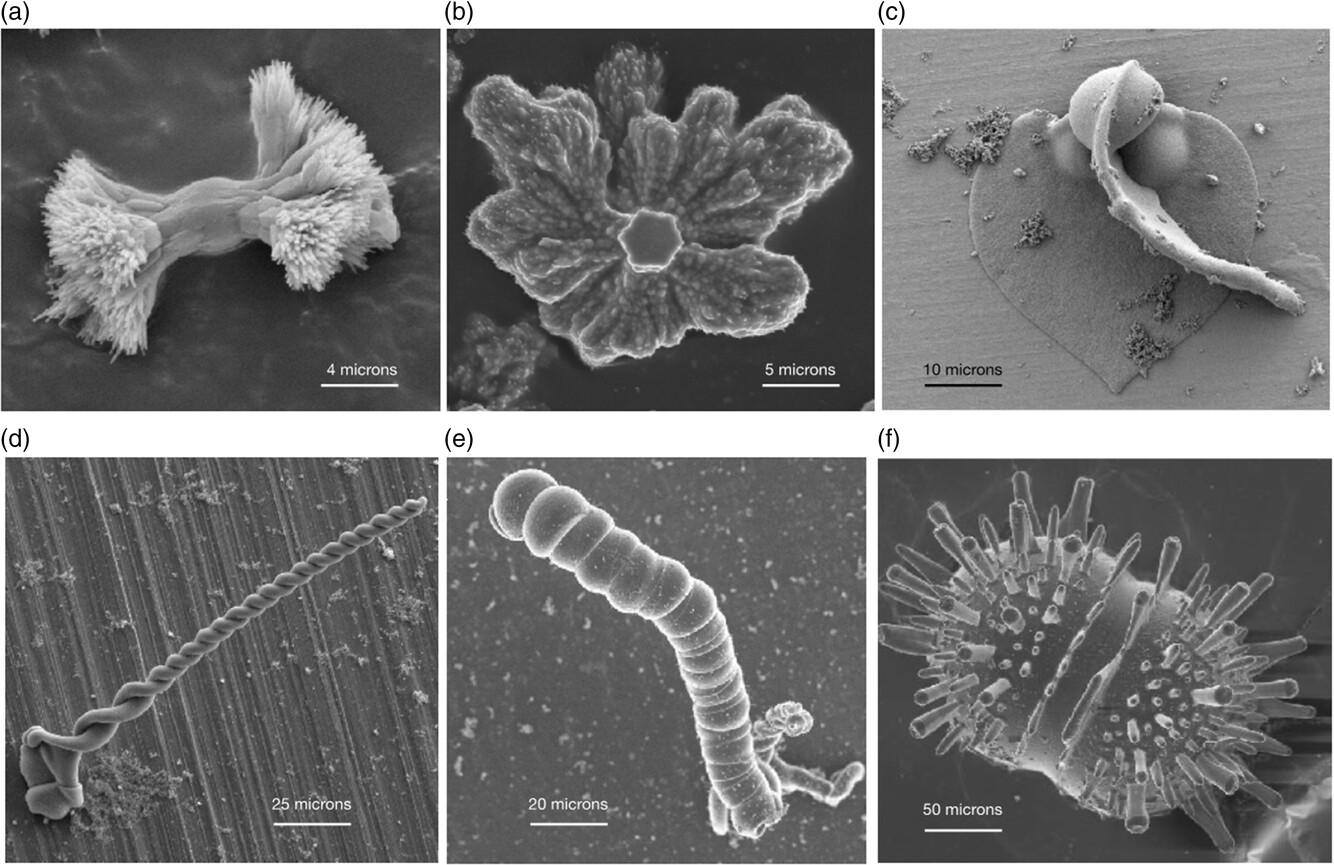The morphogenetic mechanism of different biomorphs is independent of pH
The bottom-up design of hierarchically organized nanostructures is a powerful strategy to achieve new materials with innovative functionalities. To a large extent, this approach takes inspiration from the ability of living organisms to engineer hybrid nanocomposites both for structural and functional purposes. Intense research has been dedicated to synthesizing biologically inspired textures and shapes mimicking the hybrid route found by nature, a route based on organic polymers to guide nanocrystallization An interesting alternative to the organic–inorganic hybrid structure is represented by the complex inorganic–inorganic architectures resulting from the chemical coupling of polymeric silica and carbonate. These structures are called “biomorphs” because their morphologies are reminiscent of the shape of primitive living organisms.

Biomorphs are made of thousands of carbonate nanocrystals co-oriented via silica-induced interactions into various biomimetic structures that exhibit non-crystallographic curved morphologies and hierarchical textures. The formation of biomorphs is thought to be an autocatalytic phenomenon triggered by the reverse pH dependency of the solubility of alkaline-earth carbonates and silica: as the carbonate crystals form, the pH decreases due to the continuous removal of carbonate groups, and this decreasing pH induces the precipitation of amorphous silica; in turn, the precipitation of silica causes an increase in pH and therefore triggers a new event of carbonate nucleation, thus maintaining this autocatalytic cycle of coprecipitation. The possibility of controlling the growth of biomorphs, particularly their morphology and texture, has been reported by tuning local parameters like temperature, pCO2, and pH.
A pioneering study of the spatial and temporal evolution of pH inside silica gels during the precipitation of witherite biomorphs correlated pH with a photographic record of the spatial and temporal evolution of the morphologies of the aggregates. The work demonstrated that a correct understanding of the role of pH on morphogenesis requires measuring the pH locally in real-time with a non-invasive technique
Now, a team of researchers has developed a technique 1 based on the use of fluorescence imaging to detect pH on the growing front of biomorph in solution, reporting the evidence of oscillations in the local pH at the front. The new ratiometric approach uses a probe that can be excited at two different wavelengths to give two different fluorescence signals with different pH dependency. The ratio between the two signals is independent of the local concentration of the probe and can be used to calculate pH.
This methodology ruled out artefacts in the pH measurements due to probe concentration inhomogeneity caused by diffusion transport photobleaching, or chemical degradation in harsh alkaline conditions of the silica gel. The researchers demonstrate the use of the ratiometric fluorescent pH chemosensor to measure the pH variation in time and space across the silica gel during the growth of barium carbonate biomorphs. Changes in the local pH were correlated to nucleation and biomorphic growth by combining optical transmission to fluorescence imaging.
The team measured in-situ the variation of pH within a counter-diffusion precipitation experiment forming barium carbonate biomorphs and compared it with a computer simulation of the growth experiment under identical starting conditions. The results demonstrate the envisaged existence of only two pH-dependent regimes in the formation of biomorphs: fractal growth and biomorphic growth.
Interestingly, the morphogenetic process controlling the complex shaping of biomorphs results to be independent of the silica speciation. It means that whereas there is a substantial effect of pH (and then of silica species) on the transition from fractal to biomorphic growth, the morphogenetic mechanism leading to different biomorphic shapes is independent of pH, and must be inherent to the propagation of the growth front.
Author: César Tomé López is a science writer and the editor of Mapping Ignorance
Disclaimer: Parts of this article may have been copied verbatim or almost verbatim from the referenced research paper/s.
References
- Arianna Menichetti, Jeannette Manzi, Fermín Otálora, Marco Montalti, Juan Manuel García-Ruiz (2024) Morphological Sensitivity to pH of Silica and Chalk Nanocrystalline Self-Organized Biomorphs Small Sci. doi: 10.1002/smsc.202400090 ↩